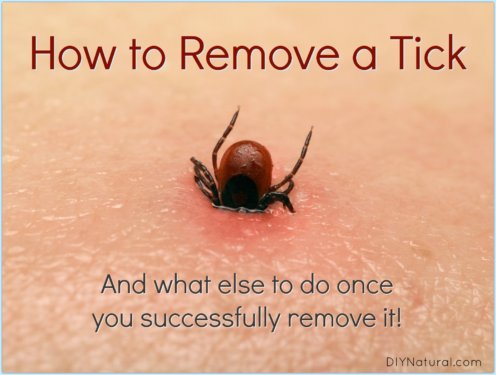
Natural Lawn Care
I’ll be the first to admit, if I didn’t have to have a lawn I wouldn’t. I’d rather have acres of flowers, fruit, vegetable plants, and other ornamentals. But right now I’m renting and I can’t have it my way, so I’m taking care of the yard naturally.
The Positives of Lawns
Once a lawn is established, it gets better. The first year is always the hardest when trying to grow a lawn. Long stretches of lawn invite bats and bluebirds, both of which are voracious eaters of mosquitoes and other bugs. Lawns can keep bare ground from eroding and they provide a nice environment for kids and pets to play.
The Downside of Lawns
Lawns can be costly to maintain. The sheer volume of water it takes just to get grass started is unbelievable. Then there’s the mowing, weeding, fixing holes, overseeding, and the possibility of dealing with diseases or pests. Mosquitoes can lay eggs and hatch in long grass. All of these and other problems are time consuming and some can be dangerous to the environment as well as kids and pets.
How to Have a Beautiful Chemical-Free Lawn
There will always be some who hate lawns and some who love them. Then there are people like me who are forced to put up with them for a time. I’ve chosen to care for mine naturally using the following steps:
Seeding
Buy the seed suited best for your area, not for convenience. It doesn’t make much sense to plant Bentgrass where Tall Fescue grows best. Yes, it will be short and you don’t have to mow it much, but it also won’t grow well and will probably be dead by the end of the season. Here in Western North Carolina, we have Tall Fescue that grows naturally. That is what I’d advise anyone to plant here. Then you won’t have to use elements like lime, because the Fescue that grows best here doesn’t need it. If you switch to Kentucky Blue Grass, which is raised in limestone soils, you will need to adjust your soil pH and keep adjusting it. You can contact your local agricultural extension agency to see what’s best for your area. Take your best clues from Mother Nature.
When seeding, be sure you’re doing it at the right time of year. Again, using Tall Fescue as an example, it’s a cool season grass and grows best in the spring and fall. Therefore, you’d want to plant it when the night time temperatures are in the 40s and 50s to get the best germination.
Water your seeds well and cover them with straw. Don’t use the commercial mats – they don’t break down well. Straw will protect your baby grass and prevent birds or wind from getting to it. It decomposes quickly into nutrients the plants need anyway. To get your lawn established, it’ll need about an inch of water a week. You can use an empty tuna can to determine how much water has fallen, either from a sprinkler or rain. You can save grey water (no soap) or use rain from barrels. Be sure you don’t use water with chlorine as it can inhibit germination.
Once established, lawns do not need as much water as you think. Water only when it looks wilted. Some grasses go dormant in either the winter or summer and turn brown. That doesn’t mean it’s dead. Don’t water during dormancy – it doesn’t need it.
Feeding
You should only feed while your grass is actively growing. I don’t feed mine at all. If you choose to do so, pick out a fertilizer high in nitrogen. Most organic lawn fertilizers use poultry feather meal, which is nitrogen rich. Manure can be too, just be sure to get aged manure, as fresh can have too much nitrogen and may burn your grass.
Mowing
New lawns can be mowed when the grass is about 6 inches high. Established lawns can be mowed whenever you think they need it. I have a reel mower, the kind that has blades that curve around and clip off the grass. These are fairly inexpensive and will last for years. My father has a robotic electric lawn mower. It comes out each day and clips off long grass blades and then returns to its docking station. Other electric mowers are available as well. And all of the chargers can be charged using solar energy. These use no electricity, gas, or other fuels. I have a battery operated weed whacker for trimming that runs for about an hour. I’ve purchased several batteries that I can keep charged so I can finish the job without re-charging.
Weeds
Keeping weeds out of your lawn can be tough when you’re trying to go organic. You can use a salt and vinegar solution to kill the weeds, but then you might kill some grass with it and either way, you’ll have to overseed the bare spots. One of the easiest ways to keep weeds out of your lawn is to cut it as long as you can. There was a study that was done many years ago at a university that determined the longer you keep your grass, the less weeds you’ll have. If you can keep your lawn at 4 inches tall, you won’t have to worry as much about weeds.
Pests
Pests in lawns can range anywhere from moles, to bugs, to even armadillos! Each one has its specific solutions. For insects try Diatomaceous Earth, or DE. Sprinkle some around your lawn and work it in well. This will not harm the beneficial earthworms, but will kill the bugs. Unfortunately, it will kill good bugs too, so be careful how and where you use it. You can also use granules with cedarwood essential oil or clove essential oil on them. Make your own by adding the oils to clay kitty litter and sprinkling it around. This should chase off most bugs like ants and spiders. For moles, castor oil based products work well for a while, but you have to reapply them every few months. Milky Spore, which is a bacteria that targets grubs, one of the staples in a mole’s diet, is very effective. It’s not cheap, and you don’t get full results for 3 years. But when it’s fully colonized it will remain effective for up to 30 years. Other pests like armadillos and ground hogs may need to be relocated. Use a live trap to catch them and take them to an approved location.
There are many ways to naturally care for your lawn. Do you have any good tips to share?
*******



